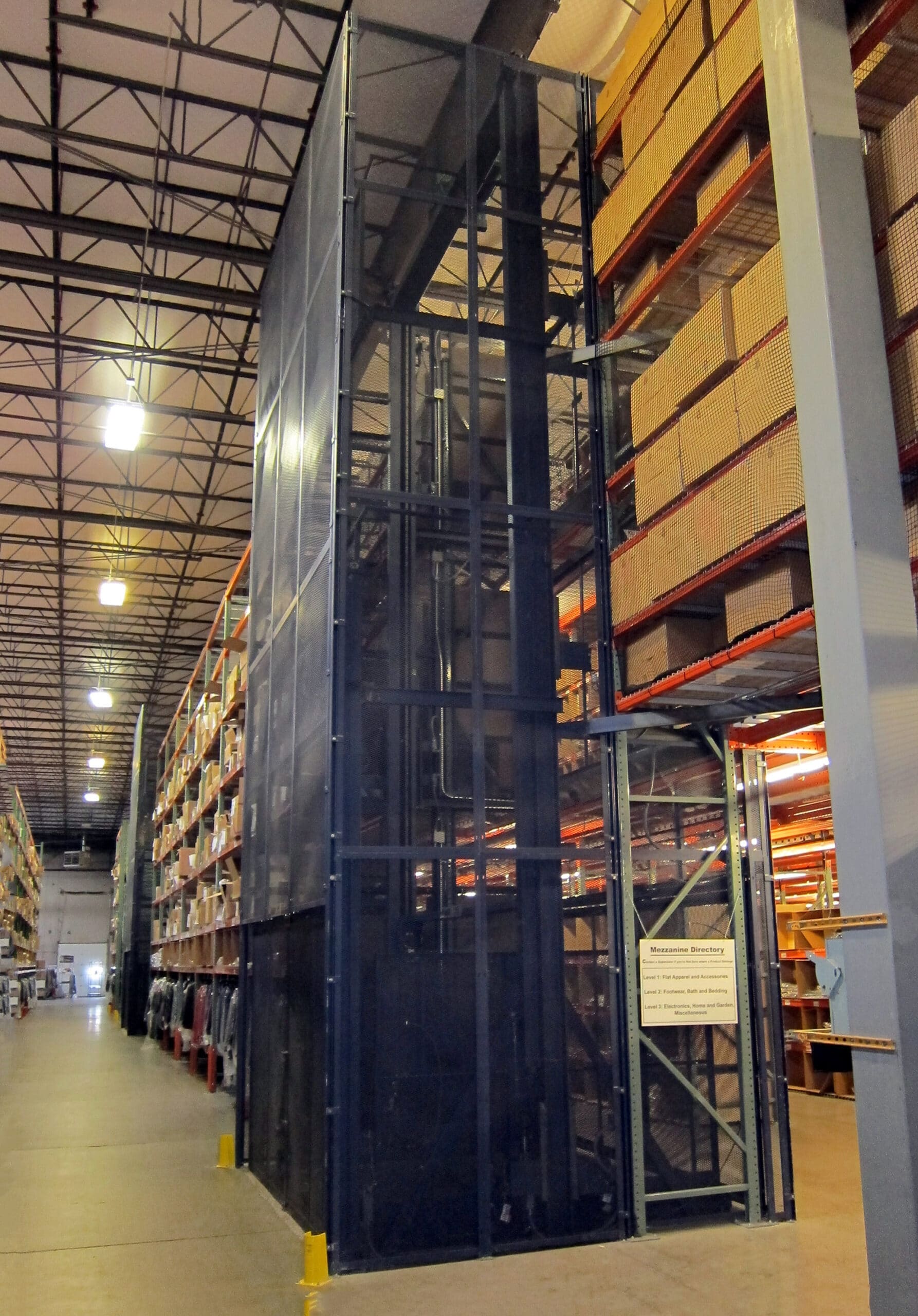Warehouse space is expensive. Before expanding your space, make sure you’re making the most of what you already have. Even if you’re not out of space, a review of how you use it could help make warehouse operations more efficient.
Below are some suggestions for improving space utilization and efficiency. Vertical warehouse space management is a large consideration, but it’s not the only factor.
Looking Upward
As real estate costs increase and urban warehousing becomes more popular, it becomes necessary for companies to expand their operations up and not out. Commercial real estate specialists, CBRE, report that average warehouse height increased by almost 4 feet between 2002 and 2017.

Improving Warehouse Space Utilization
Where to Start
In existing warehouse buildings, where raising the roof is rarely an option, a quick look will often reveal space that’s underutilized. Improving warehouse space utilization is key to more efficient material handling and workflows, increasing productivity, profit-margin, and employee safety.
Before making changes, assess your current state.
Evaluate Layout:
- Identify
- Unused space – are you using all the vertical space available? Investigate the types of warehouse storage solutions that can help you make use of this space.
- Cluttered or crammed areas – consider implementing a warehouse 5S plan to ensure areas remain organized and optimized.
- Existing balcony, mezzanine, and basement space – determine if it is being used to its full potential.
- Floor levels or spaces that can only be accessed from the outside – What can this space be used for?
- Current workflows
- Are workers and materials located in close proximity?
- What space is needed for receiving, staging, pick, pack, and return operations?
- How do these workflows change during peak times?
- Bin and storage locations
- Are items being stored in duplicate locations? If so, is it possible to add racking to accommodate one item location to improve visibility and save space?
- Current racking systems
- Are they the correct type of racks for your application?
- Are they being used correctly to maximize capacity?
- Can they be extended higher?
- Aisle width
- Are your aisles too wide?
- Can you use some aisle space for double-reach racking?
Safe, Efficient, & Cost-Effective Material Handling
After assessing current space utilization and opportunities for optimization, you’ll also need to assess the effectiveness and safety of your current material handling equipment.
- Will the equipment currently in use allow for safe and efficient material movement to additional floor levels?
- Can this equipment be used in indoor and outdoor environments?
- Can your current equipment handle the rigors of continuous use, especially during peak or surge times?
If you are unsure or answered no to any of these questions, it may be time to consider the use of a vertical reciprocating conveyor (VRC), otherwise known as a material lift. A PFlow vertical reciprocating conveyor can help your facility:
- Safely and efficiently raise and lower materials to pick modules
- Improve workflow with direct access from higher/lower levels to where goods enter and leave
- Protect materials and workers by lifting and lowering materials within the enclosed carriage of a VRC
- Store materials in locations that forklifts cannot reach
- Enable material/product storage closer to the point of use/packing, thereby reducing transport time and delays
Expand Up, Not Out
As the cost of real estate rises and availability declines, companies look for ways to optimize both sprawling suburban warehouses and smaller urban last-mile distribution centers. A VRC can help you leverage the use of your existing space.
VRCs are intended for the safe and efficient raising and lowering of materials to multiple floor levels. They are typically less expensive to install and operate than people-moving elevators, and are safer and can handle larger payloads than fork trucks.
In addition, VRCs:
- Are compatible with new or existing pick modules, mezzanines or balconies
- Are compatible with AMRs and AGVs
- Can be automated to work in tandem with horizontal conveyor systems
- Can be designed for continuous, 24/7/365 use
- Can be installed through a floor, in an existing elevator shaft, indoors or outdoors, and in spaces where it is not code compliant for people-moving elevators to be installed.
PFlow Industries specializes in the design and manufacture of hydraulic and mechanical VRCs. Whatever the size, weight, or type of material that needs to be raised or lowered, we can create a solution. If you’re interested in improving warehouse utilization and efficiency, click the link below.
